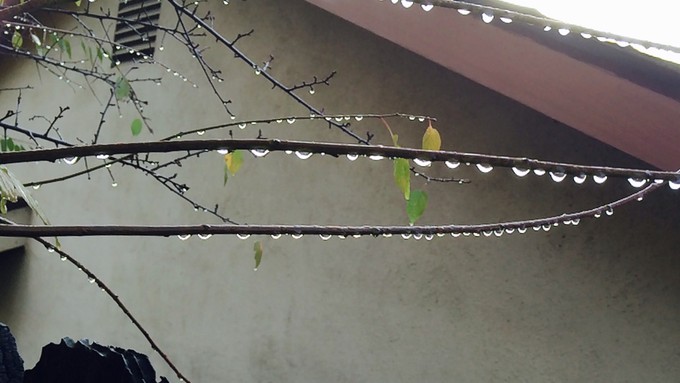
Expect a wet finale to 2022 with widespread rain

Our bare trees will get some wet post-Christmas decoration from the predicted storms this next week. Make sure your garden is prepared for the returning rainy weather. Kathy Morrison
It looks like Northern California will get what it really needs this holiday season – rain.
According to the National Weather Service, the week after Christmas will be wet. Heavy rain is expected Monday through Friday, thanks to a series of late December storms. The weather service warned of potential impacts including road flooding, slick streets, rising creeks and rapid snow melt. The main question: When? Uncertainty surrounds the timing of each storm as well as amounts, says the weather service.
As of Saturday morning, the weather service predicts the first wave to hit the day after Christmas. Sacramento can expect morning fog on Monday followed by afternoon or evening rain. Those storms will build through the night along with gusty winds. Tuesday will see heavy rain especially early in the day.
More stormy weather is expected to hit Wednesday – or Thursday – or both – and hang around through Friday.
Bookending these storms are dry days on Christmas and New Year’s Day. (But still expect fog, says the weather service.)
Temperatures will be relatively mild: Low 50s in the afternoon and low 40s overnight. So frost danger is low, too.
Make the most of the gaps between storms. But beware of soggy soil; it can compact easily and rot new transplants.
* Rake up debris dropped by trees during storms. Keep drains clear.
* Rake and remove dead leaves and stems from dormant perennials.
* Prune roses.
* Prune non-flowering trees and shrubs while they're dormant.
* Clean and sharpen garden tools before storage.
* Just because it rained doesn't mean every plant got watered. Give a drink to plants that the rain didn't reach, such as under eaves or under evergreen trees.
* If you have a living Christmas tree indoors, get it outdoors as soon as possible. Potted evergreens need light.
* Plant garlic and onions for harvest in summer.
* Plant bare-root berries, kiwifruit, grapes, artichokes, horseradish and rhubarb.
* Got bulbs? Plant them in pots.
Comments
0 comments have been posted.Sacramento Digs Gardening to your inbox.
Sites We Like
Garden Checklist for week of July 21
Your garden needs you!
* Keep your vegetable garden watered, mulched and weeded. Water before 8 a.m. to reduce the chance of fungal infection and to conserve moisture.
* Feed vegetable plants bone meal, rock phosphate or other fertilizers high in phosphate to stimulate more blooms and fruiting. (But wait until daily high temperatures drop out of the 100s.)
* Don’t let tomatoes wilt or dry out completely. Give tomatoes a deep watering two to three times a week.
* Harvest vegetables promptly to encourage plants to produce more. Squash especially tends to grow rapidly in hot weather. Keep an eye on zucchini.
* Pinch back chrysanthemums for bushy plants and more flowers in September.
* Remove spent flowers from roses, daylilies and other bloomers as they finish flowering.
* Pinch off blooms from basil so the plant will grow more leaves.
* Cut back lavender after flowering to promote a second bloom.
* It's not too late to add a splash of color. Plant petunias, snapdragons, zinnias and marigolds.
* From seed, plant corn, pumpkins, radishes, winter squash and sunflowers.